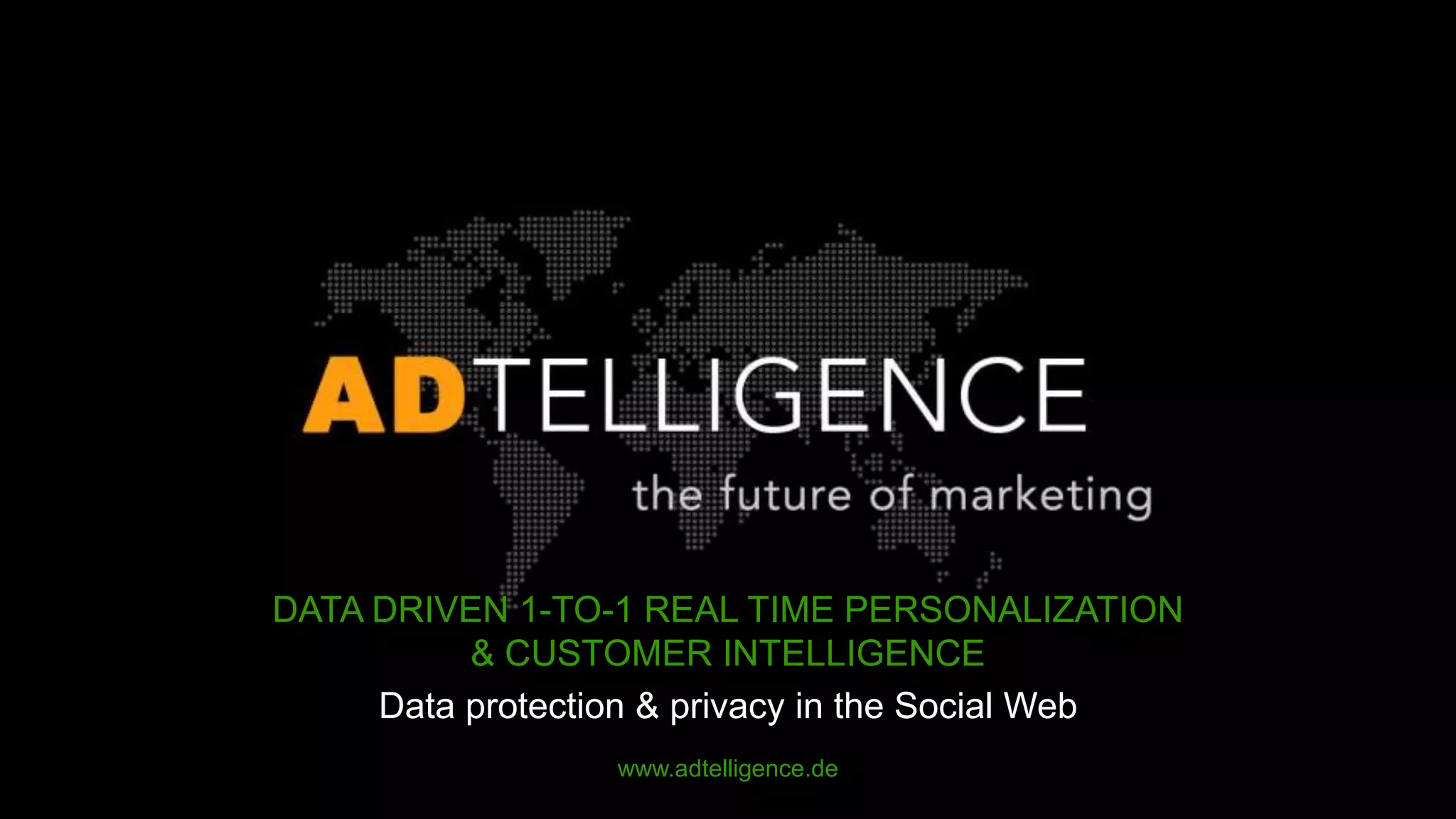The document discusses the tension between legal protections for user data privacy and social networks' use of personal data for advertising. It notes that data protection laws require user opt-in for third party use of personal data, while users are concerned about how their data is shared and used. The document examines different approaches to using user data like anonymization, pseudonymization, and explicit user consent. It concludes that transparency is key to resolving debates around data privacy, and networks must clearly communicate how user data is collected and used.






